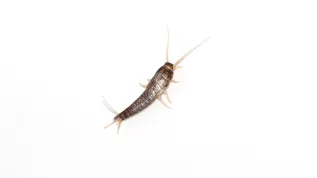
The foraging activity of fish and large aquatic invertebrates, such as crayfish, contributes to the mechanical fragmentation of microplastics, reducing their average size and accelerating their degradation, scientists from the University of Warsaw, Warsaw University of Life Sciences, AGH UST, the University of Rzeszów and an Indian university have demonstrated.
Microplastics in water are a growing problem. Various scientific teams are discovering new, sometimes surprising types of threats from microplastics, which are increasingly polluting the environment. Microplastics are microscopic particles that are released from plastic objects, including plastic waste.
So far, a large part of the research on the possible impact of aquatic organisms on the condition of microplastics has concerned microorganisms (for example, whether they are able to break down particles of these pollutants).
Recently, researchers from research centres in Poland and India investigated how tiny polyethylene beads (275 micrometres in diameter, or less than one third of a millimetre) behaved as they passed through the digestive tracts of cyprinids (Carassius carassius) and crayfish (Cherax quadricarinatus). The scientists were interested in possible impact on the particle surface properties, size, and bacterial colonization.
To test this, the scientists fed the animals a diet either with or without microplastics. After passing through the digestive tract twice, the particles were exposed to known bacterial concentrations. Surface damage, particle size changes, and biofilm formation were analysed using scanning electron microscopy, while surface chemical composition was assessed with Fourier-transform infrared spectroscopy. Additionally, nanoplastic penetration into digestive tract tissues was examined using pyrolysis–gas chromatography–mass spectrometry.
As it turns out, passage through the digestive tract alters the surface properties of microplastics and leads to their fragmentation, without affecting their chemical composition or the penetration of nanoplastics into animal tissues. The data suggest that the feeding activity of fish and crayfish plays a significant role in the degradation of microplastics in aquatic environments, facilitating their breakdown and promoting further biodegradation by microorganisms.
The conclusions of the study were reported on the website of the Faculty of Biology of the University of Warsaw, whose scientists - from the Department of Hydrobiology and the Imaging Laboratory of the Faculty of Biology of the University of Warsaw - participated in the research project and co-authored the publication in "Environmental Science and Technology".
'These findings highlight the necessity of considering the role of aquatic organisms in modelling the plastic cycle in ecosystems, which can aid in better predicting the fate of microplastics and developing more effective strategies to reduce plastic pollution', we read on the website of the Faculty of Biology of the University of Warsaw. (PAP)
PAP - Science in Poland
zan/ bar/













